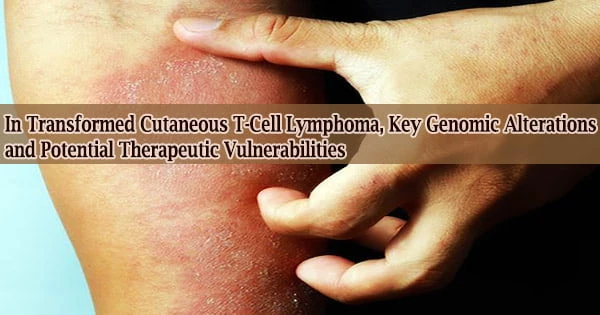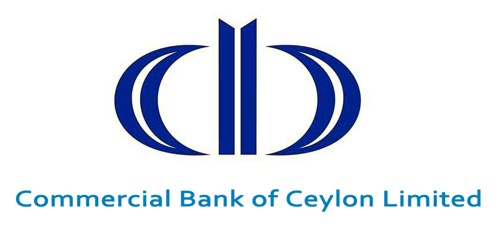How women interact with cancer prevention, care, and treatment is profoundly negatively impacted by unequal power relations in society. A recent Lancet Commission found that discrimination and gender inequality affect women’s rights and opportunities to avoid cancer risk factors as well as their capacity to seek and receive timely cancer diagnoses and high-quality cancer care.
Additionally, gender disparities restrict women from advancing professionally as leaders in cancer research, practice, and policymaking, which in turn contributes to the absence of women-centered cancer prevention and care. A majority of the workforce of unpaid caregivers is female.
In order to reduce gender inequity and lessen the burden of cancer globally, the Commission asks for a new feminist agenda for cancer care, where health systems, cancer workforces, and research ecosystems are more inclusive and responsive to the needs of women in all their diversity.
The new report, “Women, power, and cancer: A Lancet Commission,” brings together a multidisciplinary and diverse team from around the globe, including scholars with expertise in gender studies, human rights, law, economics, social sciences, cancer epidemiology, prevention, and treatment, as well as patient advocates, to analyze how women around the world experience cancer, and to provide recommendations to policy makers, governments, civil society, and health and social care systems.
“The impact of a patriarchal society on women’s experiences of cancer has gone largely unrecognized. Globally, women’s health is often focused on reproductive and maternal health, aligned with narrow anti-feminist definitions of women’s value and roles in society, while cancer remains wholly under-represented,” says Dr. Ophira Ginsburg, Senior Advisor for Clinical Research at the National Cancer Institute’s Center for Global Health and co-Chair of the Commission.
“Our Commission highlights that gender inequalities significantly impact women’s experiences with cancer. To address this, we need cancer to be seen as a priority issue in women’s health, and call for the immediate introduction of a feminist approach to cancer.”
The cancer burden in women is significantly under-recognized
A paper publishing in The Lancet Global Health journal alongside the Commission uses GLOBOCAN 2020 database on cancer mortality from the International Agency for Research on Cancer (IARC), to estimate that 5.3 million adults under 70 years old died from cancer in 2020 and that 2.3 million of these cancer deaths were in women.
The study also suggests 1.5 million premature cancer deaths in women could be prevented each year through the elimination of exposures to key risk factors or via early detection and diagnosis, while a further 800 000 lives could be saved each year if all women had access to optimal cancer care.
Approximately 1.3 million women of all ages died in 2020 due to four of the major risk factors for cancer tobacco, alcohol, obesity, and infections. The burden of cancer in women caused by these four risk factors is widely under-recognized. For example, a study from 2019 found only 19% of women attending breast cancer screening in the UK were aware that alcohol is a major risk factor for breast cancer.
“Discussion about cancer in women often focus on ‘women’s cancers,’ such as breast and cervical cancer, but about 300,000 women under 70 die each year from lung cancer, and 160,000 from colorectal cancer: two of the top three causes of cancer death among women, globally. Furthermore, for the last few decades in many high income countries, deaths from lung cancer in women have been higher than deaths from breast cancer,” adds Dr. Isabelle Soerjomataram, Deputy Branch Head of Cancer Surveillance at IARC and co-chair of the Commission.
“The tobacco and alcohol industry target marketing of their products specifically at women, we believe it’s time for governments to counteract these actions with gender-specific policies that increase awareness and reduce exposure to these risk factors.”
The causes and risk factors for cancer in women need to be examined more closely because they are less well known than the risk factors for cancer in men. There is mounting evidence linking some types of commercially available breast implants, skin lighteners, and hair relaxers mostly used by women with an elevated risk of cancer.
“While men are at higher risk for most cancer types that develop in both sexes, women have approximately the same burden from all cancers combined, with 48% of cancer cases and 44% of cancer deaths worldwide occurring in women. Of the 3 million adults diagnosed with cancer under the age of 50 in 2020, two out of three were women. Cancer is a leading cause of mortality in women and many die in their prime of life, leaving behind an estimated 1 million children in 2020 alone,” says Dr. Verna Vanderpuye senior consultant at the Korle Bu Teaching Hospital, Ghana and co-chair of the Commission.
“There are important factors specific to women which contribute to this substantial global burden by addressing these through a feminist approach we believe this will reduce the impact of cancer for all.”
Gender inequalities in society impact women’s experiences as cancer patients and within the cancer workforce
Globally, women are disadvantaged in terms of education and employment opportunities and are more likely to have fewer financial resources to help cope with cancer-related financial challenges. In a recent analysis of a study from eight Asian nations, the Commission found that nearly three-quarters of women with cancer reported catastrophic expenses in the year after their diagnosis, spending 30% or more of their annual household income on costs related to the disease, such as medical bills and complementary therapies.
“Gender norms mean women are often expected to prioritize the needs of their families at the expense of their own health, sometimes leading to the postponement of seeking health care. This can be exacerbated as gender norms also exclude men from participating in childcare in many settings, meaning it’s hard for a mother to find childcare while they seek care for their own health needs,” adds co-author Prof Nirmala Bhoo-Pathy, Universiti Malaya and Queen’s University Belfast.
Furthermore, unpaid caregiving for those with cancer is also largely undertaken by women and is undervalued by society. A new analysis of five countries by the Commission finds the value of women’s unpaid caregiving work for those with cancer ranges from 2% of national health expenditure in Mexico to 3.7% of national health expenditure in India.
The Commissioners argue caregiving represents substantial value to the economy and calls for the establishment of fair and inclusive pay standards for cancer caregivers, considering not only its monetary value but the effects of caregiving on women’s independence and economic potential.
Sexism within health care systems in the form of unconscious gender biases and discrimination can lead to women receiving sub-optimal care. For example, multiple studies have found women with cancer are more likely to report inadequate pain relief and be at greater risk for undertreatment of pain compared to men.
When a cancer patient also belongs to a marginalized ethnic or indigenous group or has a diverse sexual orientation or gender identity, these gender biases can become more pronounced. A recent national survey in the U.S. found African American women of diverse sexual orientation and gender identity reported higher intersectional stigma than any other group, and stigma was associated with a 2.4 fold increased risk in delays for seeking breast cancer care in comparison with white, heterosexual, cis- women.
Gender inequalities in society also impact the cancer workforce as well as patients and caregivers, with women significantly underrepresented as leaders.
A new analysis of leadership of the Union for International Cancer Control (UICC) member organizations undertaken for the Commission finds that, although the organizations in North America, South America, and Oceania appear to have roughly equal numbers of male and female leaders across cancer organizations, women’s representation in leadership roles remains substantially lower in Asia, Africa, and Europe.
Additionally, of the 184 UICC member organizations classified as hospitals, treatment centers or research institutes globally, just 16% are led by women.
“A key, yet often underestimated, part of the oncology workforce is cancer advocates who are mostly women and represent the population most affected by cancer. Policy makers, academic and medical institutions must fully recognize the value of patient advocates, and integrate them into all aspects of the cancer care continuum.”
“Advocates should not merely be added to a grant or article out of necessity, but considered as valuable as their clinical counterparts, a meaningful contributor and equal partner, and compensated as such,” says co-author Carolyn Taylor, Founder and Executive Director of Global Focus on Cancer.
An intersectional feminist agenda for cancer care is needed
The Commission argues that sex and gender should be included in all cancer-related policies and guidelines, making them responsive to the needs and aspirations of all women, whether they are patients, care providers, or researchers, in order to counteract the negative effects of gender inequality and transform how women interact with the cancer health system.
The Commissioners call for strategies targeted at increasing women’s awareness of cancer risk factors and symptoms, along with increasing equitable access to early detection and diagnosis of cancer. Through training programs and leadership, it should be possible to create accessible and responsive health systems that provide respectful, quality cancer care for women in all their diversities.
And to ensure there is equal representation of women in leadership positions within the cancer workforce, there must be fair access to cancer research resources, leadership, and funding opportunities for women.
“Our Commission exposes the asymmetries of power which influence women’s experiences of cancer and makes the recommendations required to advance an intersectional feminist approach that would reduce the impact of cancer for all. In a society where women’s autonomy is infringed, it’s imperative that researchers, policymakers, organizations and health care providers do all they can to meet women’s diverse and unique needs during their experiences of cancer care,” says co-author Dr. Shirin Heidari, president of GENDRO and senior researcher at Gender Center, The Geneva Graduate Institute.
Writing in a Linked Comment, Dr. Monica Bertagnolli, director of the National Cancer Institute (who was not involved in the Commission) says, “Achieving gender equality in the context of cancer research and care will require broad implementation of the recommendations in The Lancet Commission on women, power, and cancer, including the overarching priority action that sex and gender be included in all cancer-related policies and guidelines so that they are responsive to the needs and aspirations of women in all of their diversities. This is something that we can and should all support. Improved outcomes for women translate into benefits for households, communities, societies, and the world.”
















